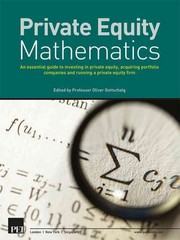Question
Problem #1 Assume that your father is now 50 years old, plans to retire in 10 years, and expects to live for 25 years after
Problem #1 Assume that your father is now 50 years old, plans to retire in 10 years, and expects to live for 25 years after he retiresthat is, until age 85. He wants his first retirement payment to have the same purchasing power at the time he retires as $40,000 has today. He wants all of his subsequent retirement payments to be equal to his first retirement payment. (Do not let the retirement payments grow with inflation: Your father realizes that if inflation occurs the real value of his retirement income will decline year by year after he retires.) His retirement income will begin the day he retires, 10 years from today, and he will then receive 24 additional annual payments. Inflation is expected to be 5% per year from today forward. He currently has $100,000 saved and expects to earn a return on his savings of 8% per year with annual compounding. To the nearest dollar, how much must he save during each of the next 10 years (with equal deposits being made at the end of each year, beginning a year from today) to meet his retirement goal?
Problem #2 You have a $2 million portfolio consisting of a $100,000 investment in each of 20 different stocks. The portfolio has a beta of 1.1. You are considering selling $100,000 worth of one stock with a beta of 0.9 and using the proceeds to purchase another stock with a beta of 1.4. What will the portfolios new beta be after these transactions?
Problem #3 Simpkins Corporation does not pay any dividends because it is expanding rapidly and needs to retain all of its earnings. However, investors expect Simpkins to begin paying dividends, with the first dividend of $0.50 coming 3 years from today. The dividend should grow rapidlyat a rate of 80% per yearduring Years 4 and 5. After Year 5, the company should grow at a constant rate of 7% per year. If the required return on the stock is 16%, what is the value of the stock today (assume the market is in equilibrium with the required return equal to the expected return)?
- Type your responses in a Microsoft Word and Excel document
Step by Step Solution
There are 3 Steps involved in it
Step: 1

Get Instant Access to Expert-Tailored Solutions
See step-by-step solutions with expert insights and AI powered tools for academic success
Step: 2

Step: 3

Ace Your Homework with AI
Get the answers you need in no time with our AI-driven, step-by-step assistance
Get Started


